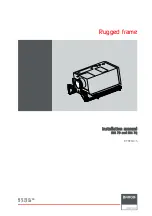
10
11
image goes in and out of focus – this is due to viewing conditions. This is to
be expected and one of the reasons why post processing software can bring
out the best in your captured images. Focus as best as possible with the
average frame being at best focus to ensure more in focus frames than out of
focus. Image processing software can then be used to select the best frames
to combine for best results.
Refocus often throughout your imaging session. This ensures at least some
of your images will have an excellent focus. It is also not uncommon for tele-
scope movements to alter the focus slightly, so be sure to refocus for any new
astro-imaging targets.
choosing a Site for astro-imaging
Once you have a focused image, you may find your image shifting and washed
out. This can be caused by many environmental factors. Poor seeing (move-
ment of molecules in the air, such as heat rising) and poor transparency (mois-
ture, smoke, or other sky contaminants) will all serve to reduce image quality.
That is why most major astronomical telescopes are on high mountains in thin
air, to get above much of the seeing and transparency problems. Also, wind
will move your telescope and affect images. Your eyes viewing through an
eyepiece can change slightly to compensate for disturbances like these, but
the camera cannot. Keep these factors in mind when choosing an observing
site for astronomical imaging.
For the best astro-images, we recommend finding a location with dry air, some
altitude, and away from city or streetlights. Even a nearby hilltop in the coun-
tryside can provide better viewing conditions than many convenient backyard
locations
.
loss of camera connection
If the computer connection to the camera is interrupted, you will need to
re-establish connection. This can happen due to several reasons; if a cable
becomes unplugged, the computer “freezes”, or the software/hardware other-
wise temporarily loses the data coming from the camera.
To re-establish camera connection, first close the Orion AmCap program on
your computer. Then, unplug and re-plug the camera into the computer’s USB
port. Now, open Orion AmCap, and the
Live Video Window
should appear
indicating re-established connection between camera and computer.
Using Focal reducers and Barlow lenses
Focal reducers serve to decrease the focal length of your telescope. This
increases the field of view seen by the camera (decreases camera magnifica-
tion). This can be useful for obtaining images of wider objects, such as the full
Moon or a landscape vista.
Barlow lenses, or other tele-extenders, increase the focal length of your tele-
scope, which makes the camera field of view narrower (increases camera mag-
nification). This is useful for high-power planetary images. Keep in mind that
when the focal length is doubled, the image will become four times dimmer, so
a longer exposure may be necessary.
For best planetary imaging, you should shoot with an effective focal ratio
(telescope focal length ÷ telescope aperture) of F/20 or greater. This will give
you a good combination of image brightness and image scale for planets. For
most telescopes, a Barlow lens will be required to obtain this focal ratio. For
example, Schmidt-Cassegrain telescopes usually have a focal ratio of F/10.
A 2x Barlow lens doubles the effective focal length of the telescope, which
makes the focal ratio f/20. Similarly, a 3x Barlow lens will yield of focal ratio
of F/30. You can also try using multiple Barlows to obtain even greater effec-
tive focal ratios. There is a limit to how large a focal ratio your telescope and
seeing conditions can handle, however. Experimentation will be needed to see
what your telescope is capable of in the seeing conditions on a given night. If
the image appears somewhat dim and fuzzy on the computer screen, you may
want to consider removing the Barlow lens.
(Focal Reducers and Barlow lenses available through Orion, check the catalog
or www.OrionTelescopes.com for more information).
Filters
For some types of planetary imaging, you may want to use color filters to bring
out subtle details. Any standard Orion 1.25" filter will thread into the front of the
SSUE’s barrel. Try using different color filters on a planet to see which filters
help best show planetary details.
Neutral-density Moon filters and variable-polarizer filters are useful to reduce
the glare from the moon. They can also be used to reduce the glare from
Venus.
Solar Filters
Warning: Always use a full aperture solar filter when viewing the sun.
With a properly fitting full-aperture solar filter attached to your telescope, you
can use the SSUE to take images of the Sun and the sunspots on its surface.
(Filters available through Orion, check the catalog or OrionTelescopes.com for
more information).
Flip Mirror
As easy as flipping a switch, the Imaging Flip Mirror enables the astropho-
tographer to find, center and focus a target visually with a 1.25" telescope
eyepiece, then photograph it with a CCD camera. All without swapping out any
equipment. It’s a real timer saver, making the normally tedious task of focusing
with the CCD camera alone easier and quicker. (Available through Orion, check
the catalog or OrionTelescopes.com for more information).


























